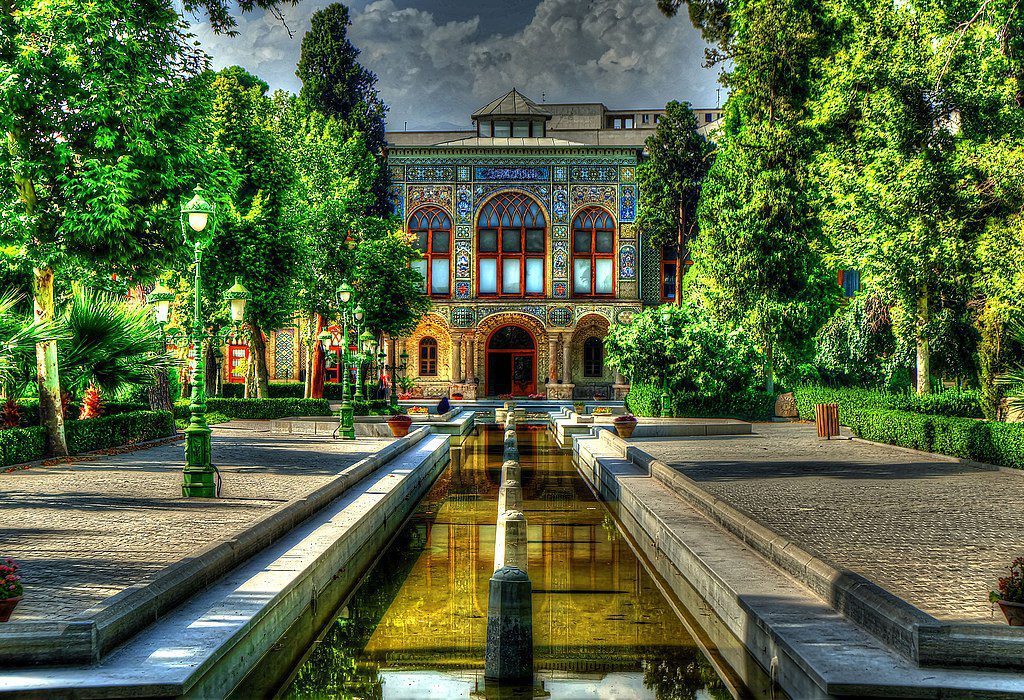Table of Contents
Golestan Palace is a historical complex in Iran’s capital city, Tehran. This former royal Qajar complex has been inscribed in the list of UNESCO World Heritage Sites in June 2013.
Buildings of this complex have been built and completed at different times. The process of building this complex started under the reign of King (Shah) Abbas Safavi and was completed in Karimkhan Zand’s governance by adding the courthouse.
And to realize how important this palace has been through the years, we could mention that 3 kings of the Qajar dynasty were crowned in this grand palace. These 3 kings are Agha Mohammad Khan Qajar, Fath’Ali Shah, and Naser-e-Din Shah.
Golestan Palace complex consists of 17 structures, including palaces, museums, and halls. Almost all of this complex was built during the 200-year rule of the Qajar kings. These palaces were used for many different occasions. It also consists of three main archives, including the Photographic Archive, the Library of Manuscripts, and the Archive of Documents.
Do you know there are 12 halls in the Golestan Palace? Keep reading to learn more about them.
Marble Throne (Takht-e Marmar)
Fath’Ali Shah of the Qajar dynasty ordered to build this spectacular terrace, known as the Marble Throne, in 1806. Adorned by paintings, marble carvings, tile-work, stucco, mirrors, enamel, woodcarvings, and lattice windows, the throne embodies the finest of Iranian architecture.
Coronations of the Qajar kings and formal court ceremonies were held on this terrace. The first ceremony was for Agha Mohammad Khan Qajar, and the last coronation at the Marble Throne was the coronation of Reza Shah of the Pahlavi dynasty, in 1925.
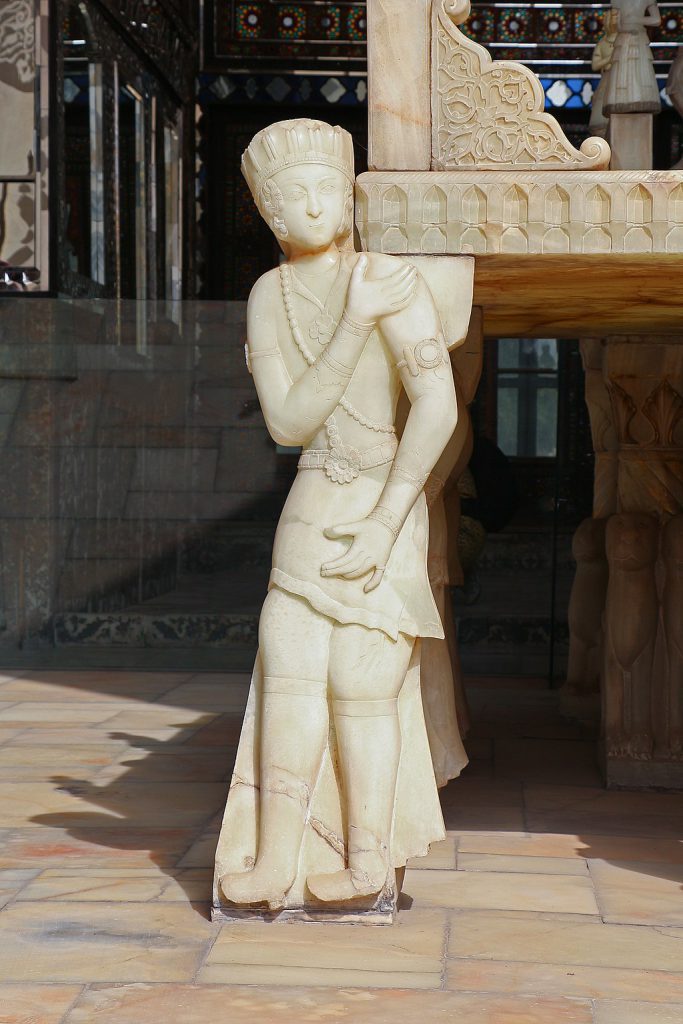
Pond House (Howz Khaneh)
Howz Khaneh (pond house) is in the basement of the Wind Catcher (Emarat-e Badgir). It worked with the four wind catchers to circulate and cool air by passing it over pools of water. The Pond House was used as a summer chamber during the Qajar era. A special cooling system pumped water from a subterranean system of streams into small ponds inside the chambers. The system was designed to pass through as many summer rooms as was necessary. The water was then channeled outside to irrigate the royal gardens. Unfortunately, this system is no longer in use.
Karim Khani Nook (Khalvat-e Karim Khani)
Dating back to 1759, this building was a part of the interior residence of Karim Khan of the Zand dynasty. This building has a similar terrace to the Marble Throne, but it is on a smaller scale and has less ornamentation. The marble stone, with an engraving of Naser-e-Din Shah’s image, is indeed a sight to behold.
Containers Hall (Talar-e Zoruf)
This building replaced the Narenjestan building in the north of Adj Hall or Sofre Khaneh. All the chinaware that were dedicated to Qajar kings by European kings were taken to this room. They were arranged in showcases that were built for this purpose. All the chinaware that exist in this room, are rare and beautiful.
Hall of Mirrors (Talar-e Aineh)
Hall of Mirrors is located on the west of Reception Hall and over the frontispiece and stone Iwan, in front of the lobby of the palace. It is one of the most famous halls of Golestan Palace. This relatively small hall is famous for its extraordinary mirror work and its ornamentation. There is even a portrayal of it in a painting created by Mirza Mohammad Khan Kamalolmolk in 1891.
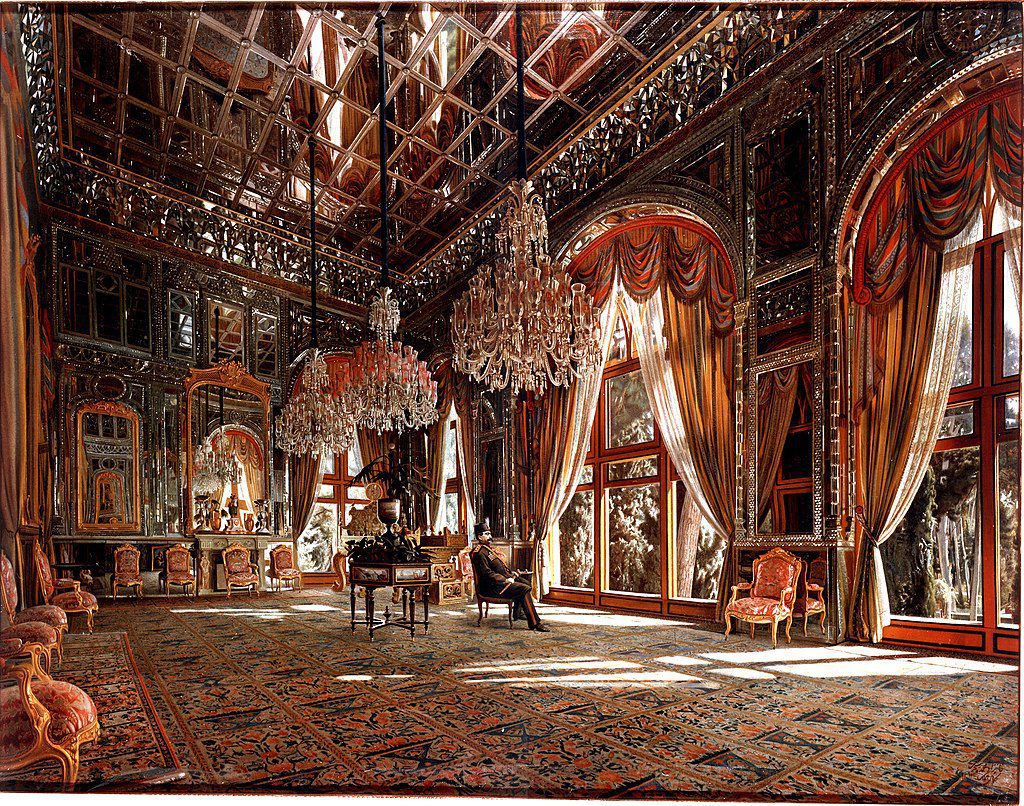
Ivory Hall (Talar-e Adj)
Talar-e Adj is one of the main halls in Golestan Palace and its date of construction is unknown. During Naser-e-Din Shah`s reign, this hall was to keep (store) gifts from European monarchs. And in the Pahlavi era, it was used as a reception area and a place to hold official parties of the court. Among the collections of the Golestan Palace, a watercolor by Mahmoud Khan Saba (Malek-o Shoara) shows the exterior view of this hall during Qajar period.

Diamond Hall (Talar-e Almas)
Diamond Hall is located on the southern wing of Golestan Palace, past the Wind-Catcher Building. It is called “Diamond Hall”, because of the exceptional and glittering mirror work inside the building. It was constructed during the reign of Fath’Ali Shah but its appearance and ornaments were modified at the time of Naser-e-Din Shah.
Brilliant Hall (Talar-e Brelian)
Talar-e Berelian (Brilliant Hall) was so named because it is decorated by brilliant mirrorwork. The Brilliant Hall is famous for its mirror work and chandeliers.
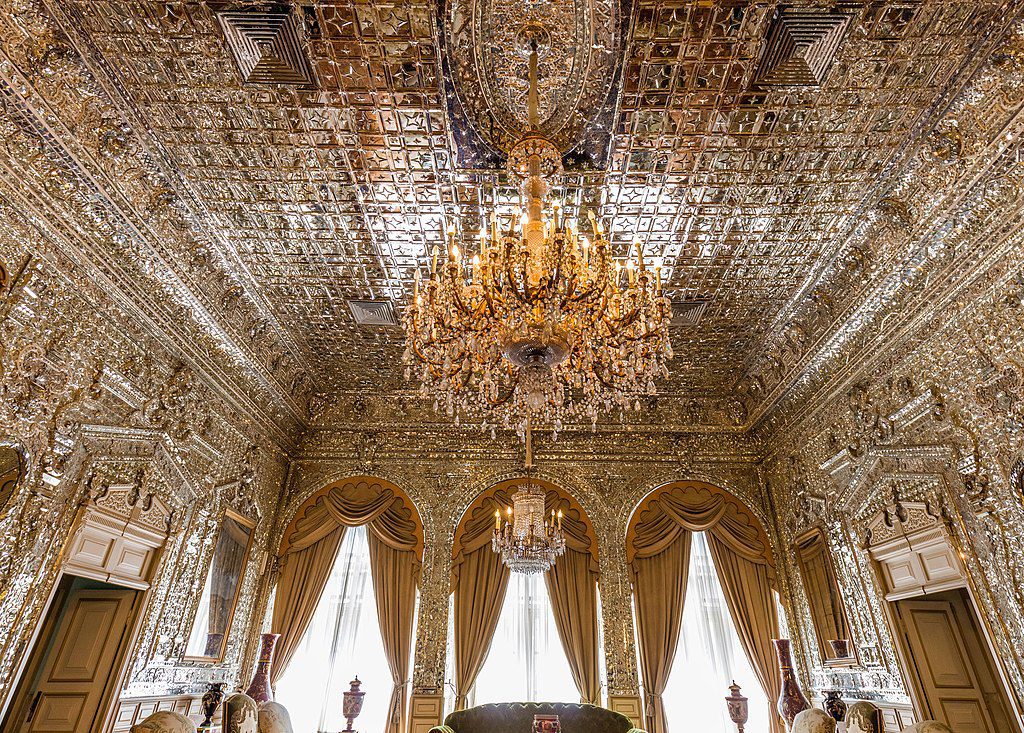
Salam Hall (Talar-e Salam)
Salam Hall (reception) was intended to become a museum from the very beginning. This hall has exquisite mirror works. The ceiling and walls are decorated with plaster molding, and the floors are covered with mosaics.
After the Peacock Throne was moved from the Mirror Hall to the museum, this hall became the venue of official court receptions and was thus named the Reception Hall. In 1966, on the occasion of the Mohammad Reza Pahlavi Coronation, the decoration of this hall was modified to its present shape.
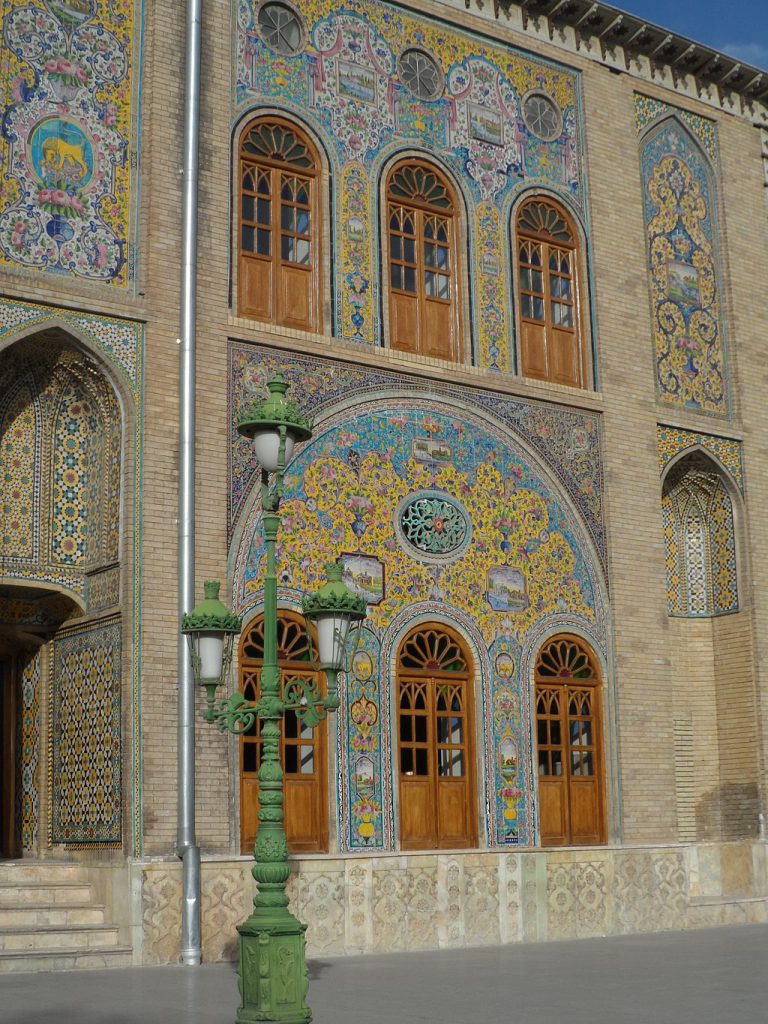
Abyaz Palace (White Palace)
Abyaz Palace which means White Palace was named so due to the color of the stucco and the white marble stones that covered its hall and staircase. It is believed that Naser-e-Din Shah, himself, designed the structure, with a central hall large enough to house the carpet which was sent by Sultan Abd-ol Hamid. This palace is now being used as a museum of anthropology and ethnology and displays some of the most ancient artifacts to be found in Iran.
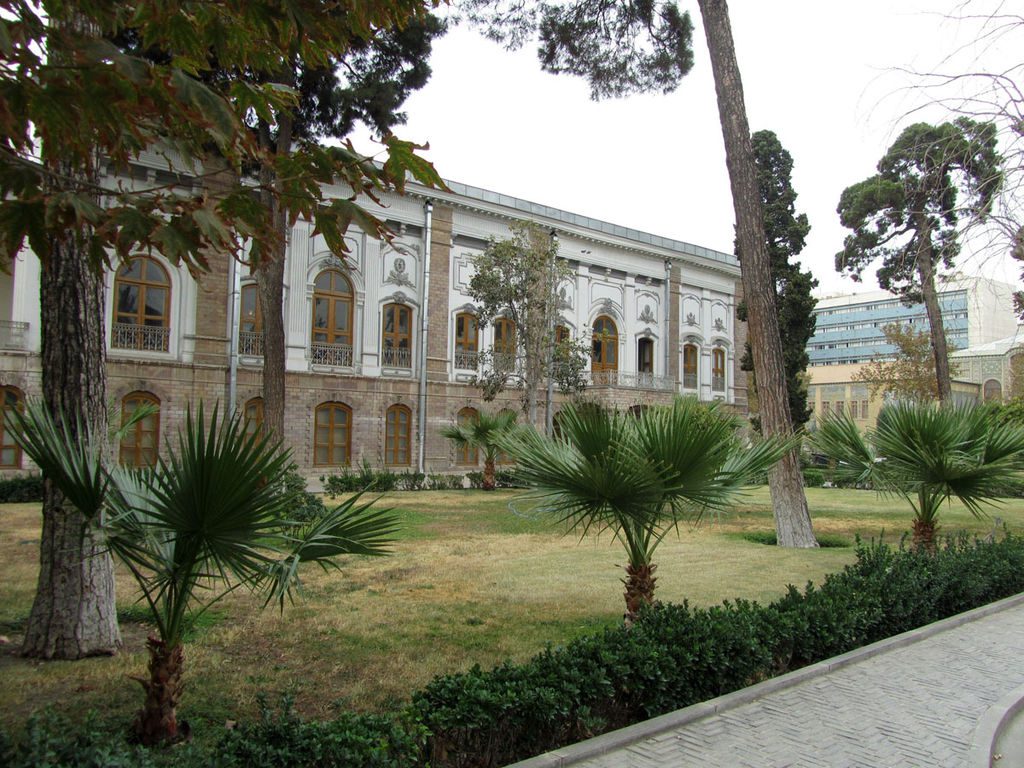
The Edifice of the Sun (Shams-ol Emareh)
Shams-ol Emareh Palace is the most prominent structure in Golestan Palace and the most distinguished one on the eastern side of the complex. After Naser-e-Din Shah’s first visit to Europe, he ordered to build this palace with 5 floors so he could have a panoramic view of the city which was inspired by Europe’s tall buildings. It is also called the House of the Sun.
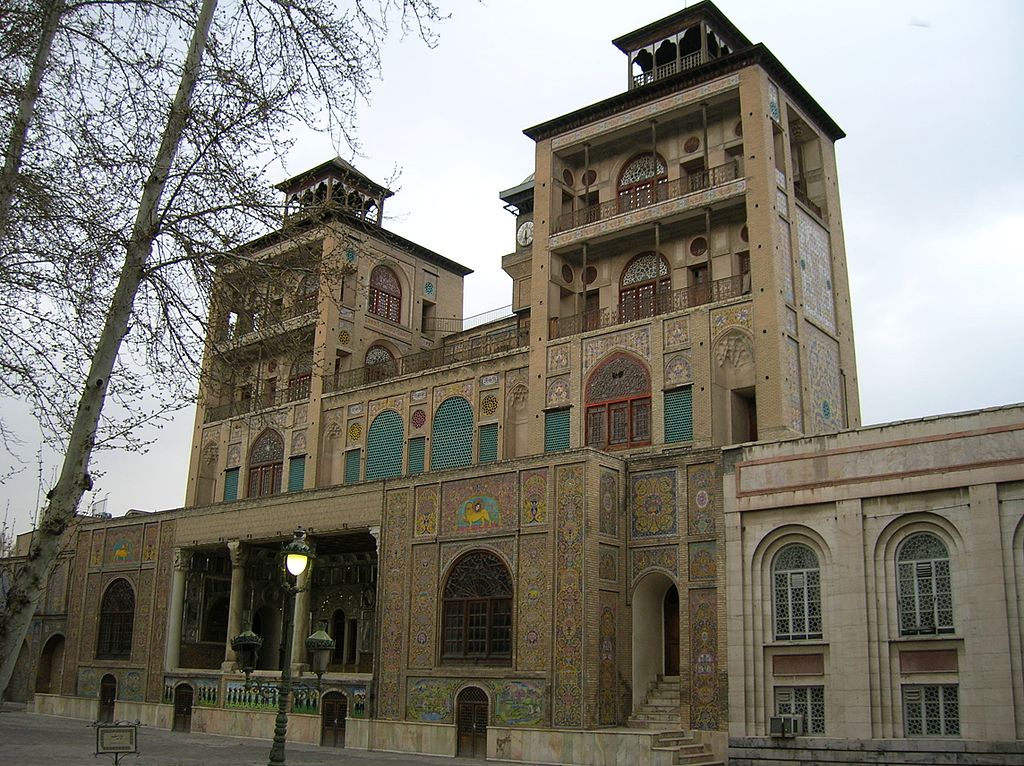
The Building of Windcatchers (Emarat-e Badgir)
This building is on the southern side of the complex and was built during Fath’Ali Shah’s reign. It is flanked by two rooms known as Gushvareh (“corner-like”). There is a central room that boasts the finest stained glass window in the Golestan Palace. Outside, there are four wind towers of blue, yellow, and black glazed tiles and a golden cupola. The Windcatchers are constructed to allow the cooling wind to move through the structure.
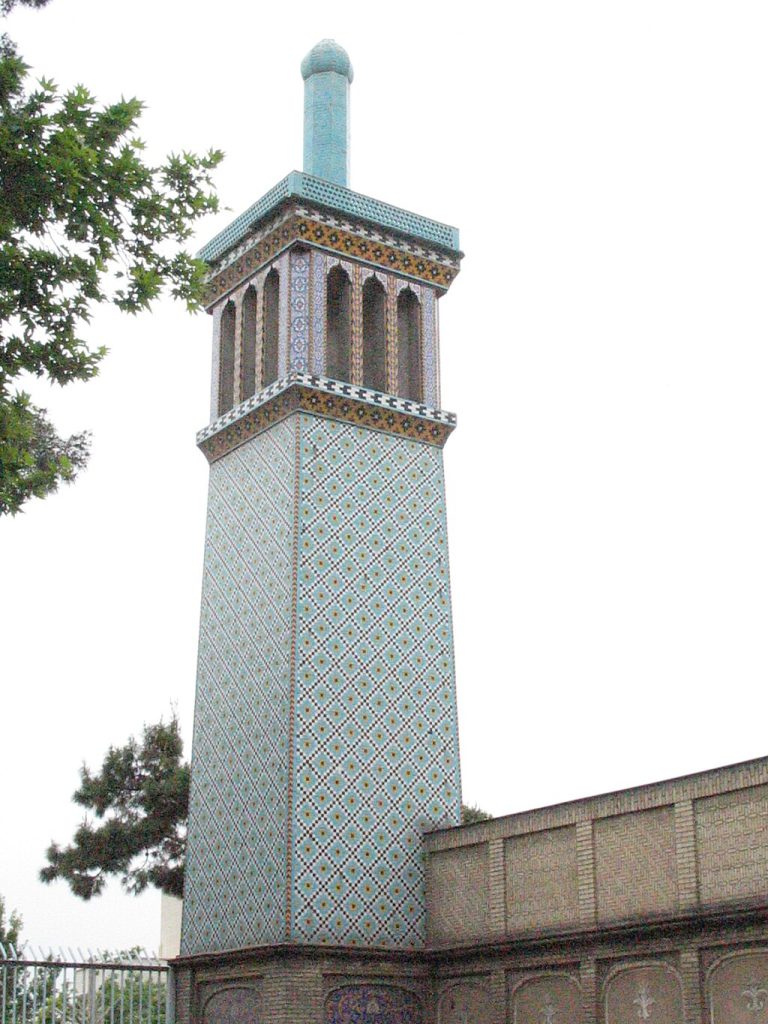
How to visit Golestan Palace?
According to your schedule, you can visit this amazing palace within half a day, or if you have time, you can enjoy its glorious details for a whole day to have an exclusive tour of this great example of Qajar-era architecture in the city.
You can visit buildings individually or buy a combo ticket that allows you to visit them all. Sadly, you cannot photograph the interior of many of the buildings. But the spectacular tile work on many of the facades, fountains, windcatchers, and manicured gardens nevertheless makes for some amazing shots!
Visiting hours of Golestan Palace
March 20 – September 21 (First Six months in Hijri Shamsi Calendar) 9 AM- 7 PM
September 22 – March 19 (Second Six months in Hijri Shamsi Calendar) 9 AM – 5 PM
Address of Golestan Palace
It is easy to reach, either by public transportation like taxis, buses or underground.
– Using the Tehran metro line 1, Panzdah-e Khordad station,
– Using the bus terminal of Imam Khomeini Square and Zurkhaneh.
FAQs about Golestan Palace
Q1. How many halls are there in Golestan Palace?
A1. There are 12 halls in Golestan Palace, including the Marble Throne, Pond House, Karim Khani Nook, Containers Hall, Hall of Mirrors, Ivory Hall, Diamond Hall, Brilliant Hall, Salam Hall, Abyaz Palace, The Edifice of the Sun, and The Buildings of Windcatchers.
Q2. Which king ordered the construction of the Marble Throne?
A2. The Marble Throne was ordered to be built by Fath’Ali Shah of the Qajar dynasty in 1806.
Q3. What was the purpose of the Pond House in Golestan Palace?
A3. The Pond House, located in the basement of the Wind-Catcher, served as a summer chamber during the Qajar era. It utilized a cooling system that circulated air over pools of water to provide a comfortable environment.
Q4. What is the significance of Karim Khani Nook in Golestan Palace?
A4. Karim Khani Nook is a building within Golestan Palace that dates back to 1759 and was part of the residence of Karim Khan of the Zand dynasty. It features a smaller-scale terrace and a marble stone with an engraving of Naser-e-Din Shah’s image.
Q5. What can be found in the Containers Hall of Golestan Palace?
A5. The Containers Hall replaced the Narenjestan building and houses the chinaware dedicated to Qajar kings by European monarchs. It showcases rare and beautiful chinaware collections.
Q6. How can I visit Golestan Palace?
A6. You can visit Golestan Palace by purchasing an individual ticket for specific buildings or a combo ticket for access to all structures. The palace can be explored within half a day or a whole day, depending on your schedule. Please note that photography restrictions may apply to the interior of some buildings, but the exterior and gardens offer stunning photo opportunities.
Q7. What are the visiting hours of Golestan Palace?
A7. The visiting hours for Golestan Palace are as follows:
March 20 – September 21: 9 AM – 7 PM (First six months in Hijri Shamsi Calendar)
September 22 – March 19: 9 AM – 5 PM (Second six months in Hijri Shamsi Calendar)
Q8. Where is Golestan Palace located and how can I get there?
A8. Golestan Palace is located in Tehran, Iran’s capital city. It is easily accessible by public transportation such as taxis, buses, and the Tehran metro. You can reach it by using Tehran metro line 1 and getting off at Panzdah-e Khordad station or by using the bus terminal of Imam Khomeini Square and Zurkhaneh.
Unveiling Iran’s Historical Marvels: Embark on a Knowledge-Based Archaeological Tour
Experience the best of Iran’s historical sites by embarking on a knowledge-based and archaeological tour. Discover the captivating stories behind Iran’s rich cultural heritage as you explore ancient ruins, architectural wonders, and archaeological excavations. ToIranTour, a leading tour operator, specializes in customized tours designed to suit your preferences. With their expertise and passion for showcasing Iran’s historical marvels, they create meticulously crafted itineraries that offer an unforgettable journey through time.
Tailored Iran Tours: Your Gateway to Unforgettable Adventures
ToIranTour offers customized Iran tours that cater to your specific interests, duration of stay, and desired level of exploration. Their team of experienced professionals curates personalized itineraries, ensuring every step of your journey aligns with your travel preferences. Whether you seek to visit magnificent sites like Persepolis, wander through the hidden alleys of Yazd, or delve into the ancient ruins of Susa, ToIranTour will create a bespoke itinerary that leaves you with unforgettable memories and a deeper understanding of Iran’s historical significance. Trust ToIranTour to guide you on an exceptional travel experience, providing expert guides, comfortable accommodations, and seamless logistics for an enriching journey through Iran’s historical treasures.
